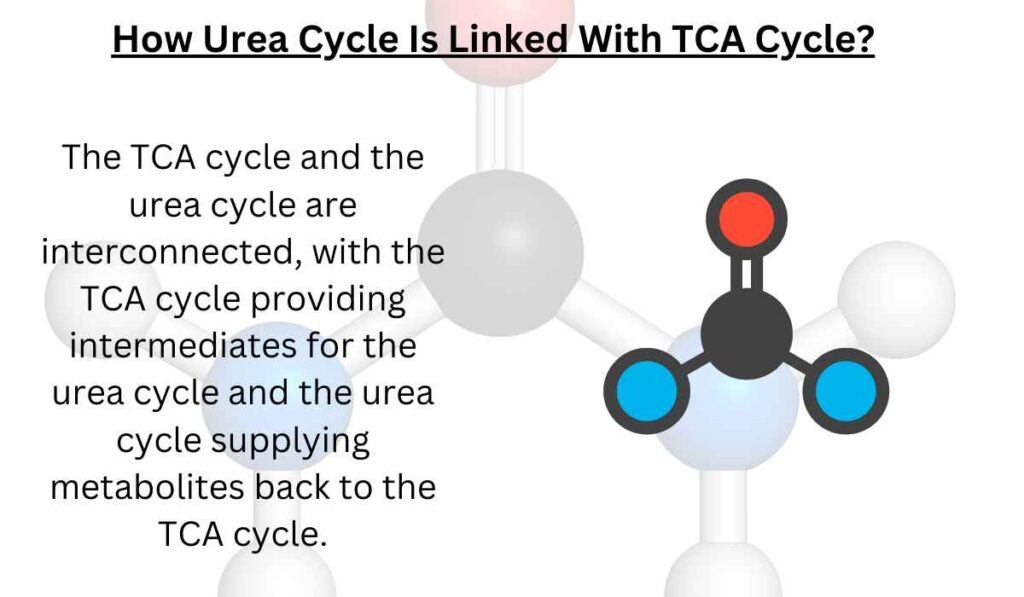How Urea Cycle Is Linked With TCA Cycle?
The urea cycle and the TCA cycle are connected through the exchange of intermediates. The urea cycle provides aspartate to the TCA cycle through transamination of oxaloacetate, and the TCA cycle contributes fumarate back to the urea cycle.

Connecting Compound of Urea Cycle & TCA
Fumarate and aspartate serve as the connecting molecules between the urea cycle and the citric acid cycle. Fumarate is a product of the TCA cycle and is used as a substrate in the urea cycle. Aspartate, derived from the TCA cycle intermediate oxaloacetate, is also involved in the urea cycle.
Link Between Citric Acid Cycle And Urea Cycle
The tricarboxylic acid (TCA) cycle, is linked to the urea cycle through reciprocal interactions. The TCA cycle provides important intermediates that contribute to the urea cycle, while the urea cycle supplies metabolites back to the TCA cycle.
The TCA cycle is involved in the production of energy through the oxidation of acetyl-CoA derived from various metabolic pathways. Within the TCA cycle, one of the intermediates, oxaloacetate, can undergo transamination to form aspartate. Aspartate is a key amino acid, that serves as a nitrogen donor for the urea cycle.
Conversely, Aspartate, derived from the urea cycle, can be converted to oxaloacetate, a TCA cycle intermediate, through transamination. It allows the nitrogen from the urea cycle to be integrated back into the TCA cycle.
Additionally, the TCA cycle produces other intermediates such as α-ketoglutarate and fumarate. These intermediates can be utilized by the urea cycle to synthesize arginine, a crucial component of urea production. Fumarate, in particular, plays a dual role as it can enter the TCA cycle to generate energy and can also be used as a substrate in the urea cycle.

 written by
written by 

Leave a Reply